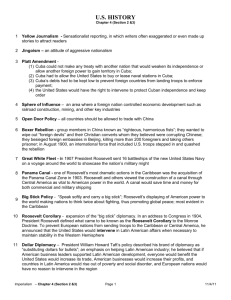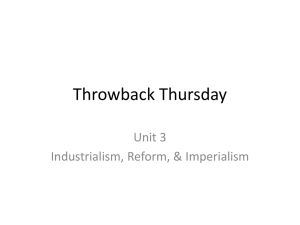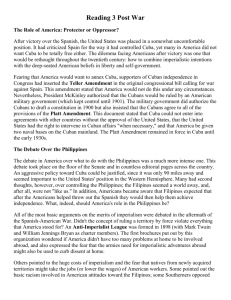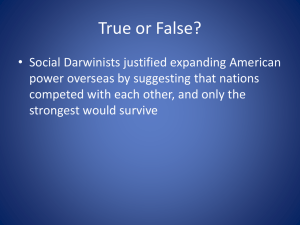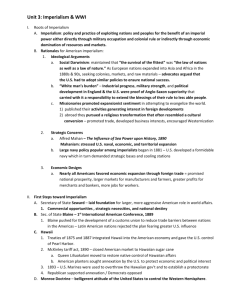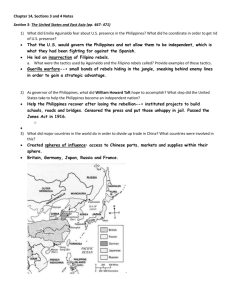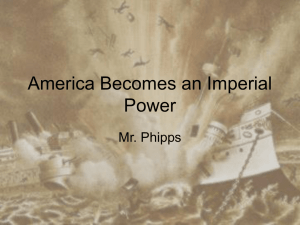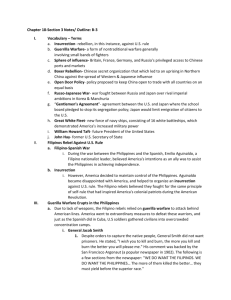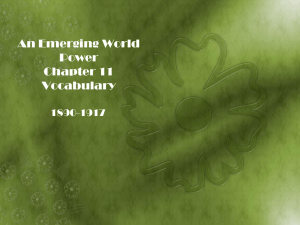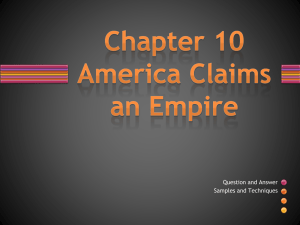Standard 14 - Worth County Schools
advertisement
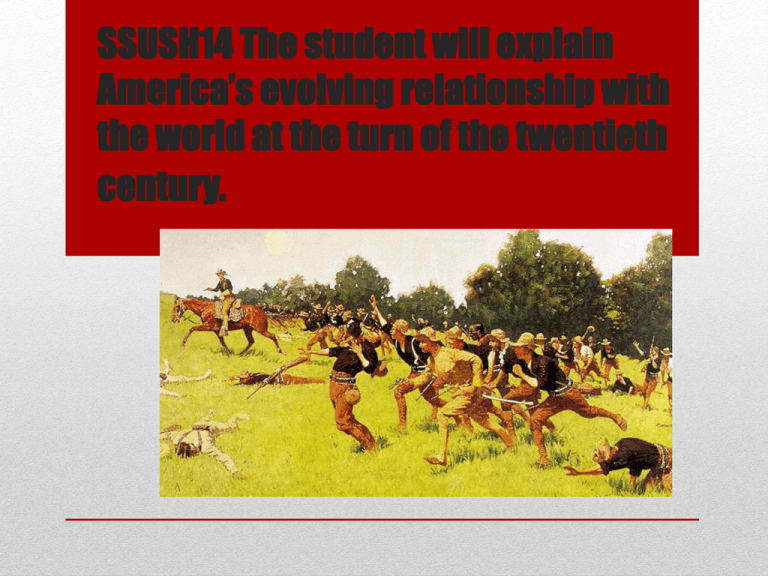
SSUSH14 The student will explain America’s evolving relationship with the world at the turn of the twentieth century. a. Explain the Chinese Exclusion Act of 1882 and anti-Asian immigration sentiment on the west coast • Most Chinese immigrants to the U.S. entered on the west coast. • Many Chinese came to the U.S. to escape poverty and civil war in China and to help build the transcontinental railroad. • By the 1870s there was strong opposition to Chinese immigration due to the fear of losing jobs to Chinese laborers. Chinese Exclusion Act • In 1882 the U.S. Congress passed the Chinese Exclusion Act which prohibited any further Chinese immigration for 10 years. This was in part a result of nativism. • The Act was not repealed until 1943. b. Describe the Spanish-American War, the war in the Philippines, and the debate over American expansionism. • In the1800s many Americans wanted to expand American power overseas in reaction to European Imperialism: a continuation of Manifest Destiny • In Cuba, an island controlled by the Spanish, Cuban rebels began to rise up against their Spanish rulers. Spanish-American War • Many Americans supported the Cuban rebels • In 1898,President McKinley, fearing destruction of American interests, declared war on Spain • The American Navy blockaded Cuba and prepared to attack the Spanish controlled Philippine Islands The Philippines • The U.S. Navy attacked the Spanish fleet in the Philippines and quickly defeated them. • The U.S. then invaded the islands with the aid of Filipino rebels and captured the capital city. • The U.S. Army refused to recognize the new rebel government. How do you think the Filipino rebels felt about the U.S. Army? Cuba • The U.S. Army invaded Cuba in 1898 • After two weeks of fighting the Spanish surrendered Cuba and Puerto Rico • Under the treaty the U.S. would annex Puerto Rico and Guam, and Cuba would be given it’s freedom. Many Americans also wanted to annex the Philippines. The annexation of the Philippines • Supporters of annexation argued that the islands would give the U.S. an economical and military advantage. • Anti-imperialists argued against annexation worrying that it would cost too much to support and defend the Philippines. • In 1898, the U.S. annexed the Philippines causing Filipino rebels to attack American troops. • The uprising was eventually put down, in part by the American ability to stimulate the Filipino economy and promote education and health care systems. c. Explain U.S. involvement in Latin America, as reflected by the Roosevelt Corollary to the Monroe Doctrine and the creation of the Panama Canal. Panama Canal • To insure a quick response by the U.S. Navy worldwide, President Theodore Roosevelt acquired the Panama Canal Zone in 1903 • To acquire the area, which was part of Columbia, the U.S. supported a revolt for Panamanian independence Panama Canal • Why build the canal? Roosevelt Corollary (1904) • To expand his “big stick” policy, President Roosevelt issued the Roosevelt Corollary stating that the U.S. would intervene in Latin American affairs when necessary What was the purpose of the Monroe Doctrine? How are the Roosevelt Corollary and the Monroe Doctrine connected?

